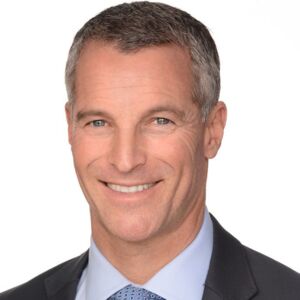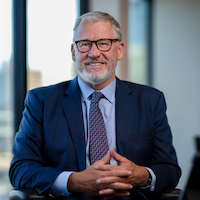Superfunds benchmarked for responsible investment commitment

The Responsible Investment Association of Australasia (RIAA) surveyed 53 of Australia's largest super funds for the RIAA Super Fund Responsible Investment Benchmark Report 2018. With 81% of funds showing a commitment to responsible investment (RI), and the doubling of appointments of RI employees, it shows some healthy trends since the last survey in 2016. However, there is need for improvement, with just 10 funds identifying climate change risk as a key consideration in strategic asset allocation and only six funds showing activity in impact or community investing. Industry Moves asks Simon O'Connor, chief executive officer of RIAA to tell us a little more about the findings and how the association is working with its members to refine and articulate standards of approach to RI.

The report shows RI employees doubling from the 2016 survey. What do you see as the benefit to a fund in having an in-house full-time RI employee over outsourced experts?
Responsible investing is not a homogenous process and so each investment organisation will necessarily have their own nuances to their approach reflecting their own clients' and investment beliefs. To have a responsible investment expert in-house means that this unique approach can consistently be operationalised across investment teams, client support, board engagement, as well as marketing and communications. It's very hard to replicate this organisation specific approach to responsible investing relying solely on external experts, so it's great to see this strong increase in staffing to properly deliver responsible investment.
17 out of 53 funds (32%) disclose that regular monitoring and annual surveys of client interests and satisfaction takes place. Given the many methods of communication now available, why do you think that number isn't higher?
More and more super funds are monitoring and surveying their members and we anticipate this will become a core part of informing any super fund's responsible investment strategy, and indeed a super fund's broader approach to delivering good super products for Australians. This result has jumped up 10% in the last 18 months but is still only a third of funds. This really reflects that more and more Australians have in recent years awoken to the fact that they can have a say in how their retirement savings are invested and are getting in contact with their funds on ethical and sustainability-related issues. Funds are increasingly proactively responding to this interest through member surveys and we'd expect this number to continue to go up quite rapidly. As you rightly point out, there are many methods of communications easily available to funds these days to survey members. One constraint to date has simply been the practical challenge of surveying members of super funds who often number in the hundreds of thousands, or in some cases, millions.
"...we have a very active human rights working group helping our members to better understand the full range of human rights risks, and how to engage companies to improve their HR practices"
Six funds (unchanged since 2016) report some targeted activity and investments in impact or community investing. Do you see Australia following other countries in increasing activity in this area?
There is a rapidly growing interest from within funds to do impact investments and we will no doubt see those numbers rising over the coming years as impact products that are of sufficient scale and have some track record become increasingly available. Some of the frequently cited bottlenecks are slowly being cleared - such as breadth of products and deals available, scale, fee structures, track records - and, even more importantly, that pioneers are sharing their insights and lessons for the next cohort to follow along. Not only will we see more impact investments by super funds, but we'll also see a lot more discussion around the impacts that the full portfolio is delivering on, such as reporting by funds on their contribution to the Sustainable Development Goals, and portfolio carbon emission reductions.
Your findings show that the definition of human rights exclusion varies widely from fund to fund. Do you see a role for RIAA in helping to standardise this, and perhaps other, hard to classify criteria.
We certainly do work with our members to refine and articulate standards of approach to responsible investment, and part of this is articulating best practice approaches to certain exclusions. For example, we have a very active human rights working group helping our members to better understand the full range of human rights risks, and how to engage companies to improve their HR practices. Equally, we have been assessing the many approaches to fossil fuel exclusions, and through our Certification Program (www.ResponsibleReturns.com.au) we are instilling minimum standards for what can be called a fossil fuel exclusion. This work is based on best available knowledge from experts, but also we take a consumer-centric view when we assess this to ensure that a consumer would not feel mislead by claims made by responsible investors.
Just 10 funds identify climate change risk as a key consideration in strategic asset allocation. What do you see as the reason for this important issue being given such low priority?
Climate change is being managed in an incredibly varied way across funds, with two-thirds of boards having oversight on climate risk, many funds choosing selective exclusions (divestment), or making investments in low carbon assets (green property, low carbon funds, forestry, renewable energy), an increasing activity in engagement and voting. We've certainly seen a shift from just an acknowledgement of climate risk to activity to mitigate and shift the portfolio to avoid climate risks. And yet, still only 10 funds can confirm that this sits at a strategic asset allocation consideration, so although there is now a lot of activity being undertaken, we still have some work to be done to get this deeply embedded in portfolio construction in a highly strategic manner. This will no doubt flow on as the funds continue to embed an RI approach across their full fund.
You can download the full report here



